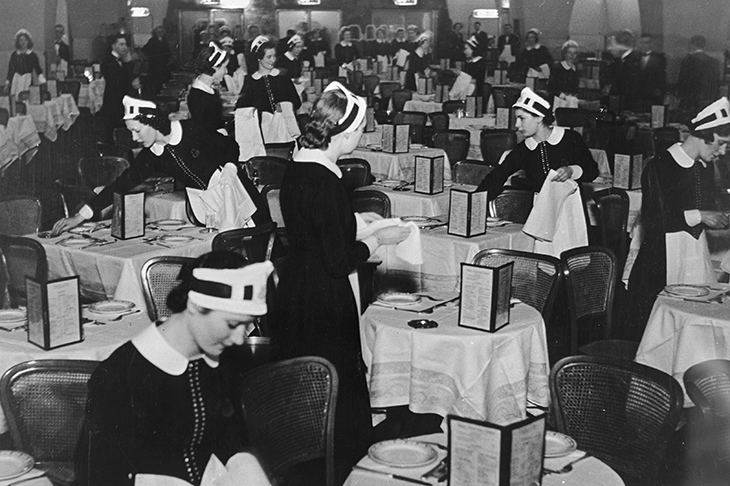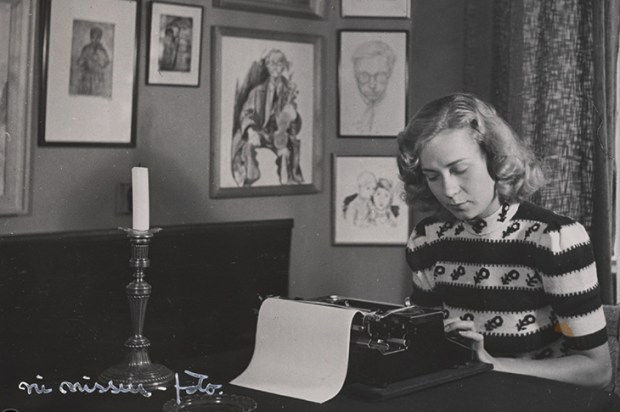In Whitechapel, in the mid 19th century, rolling and selling cigars was a way for a newly arrived immigrant to scrape a living. This is what Samuel Glückstein did, after he landed in London from Belgium in 1843. He built up his cigar business until he could send for his parents and siblings. One of his sisters married a man named Salmon (also in the tobacco trade) and thus the Salmon & Gluckstein firm was born. The fortunes of these intertwined families and their business empire are traced in this book.
Within 20 years they had a large chain of tobacconists, and their brand was known across the country. They even had the capital to consider expansion — and Samuel’s son Monte had the foresight to look at catering, providing refreshments at the many public exhibitions during the last decades of Queen Victoria’s reign. They also decided that for the new venture they needed a less ethnic-sounding name, so chose an acquaintance, Joseph Lyons, as their frontman. Thus the Lyons brand was born.
Having decided to turn to catering, they didn’t do it in half measures. Not for them a tent with stale sandwiches. Their first refreshments pavilion, at a mining and engineering exhibition in Newcastle in 1887, was a two-storey affair, to seat more than 1,200. It was richly decorated with an Oriental theme. Lyons set out to supply decent food and non-alcoholic drinks at reasonable prices, in a pleasant atmosphere — quite a revolutionary idea at the time. And one that exhibition punters took to in droves.
Succeeding with temporary venues, Monte realised they could profit with a permanent site, and the Lyons teahouses were created. Lyons succeeded partly by recognising the mood of the times. Increasing numbers of women were working in the cities, and wanted somewhere safe and affordable to eat. Lyons also focused on employing women as waitresses, offering a job opportunity outside domestic service or retail. They built consumer loyalty by providing a reliable and consistent experience: each branch sold the same menu, at the same prices.
Lyons was also a pioneer of what would now be termed ‘vertical integration’ — to control the supply chain right to the point of consumer sale. They not only ran tea rooms, but baked the bread and cakes on offer there, and blended the tea. This led to more retail opportunities, and they were soon selling bread and leaf tea separately.
Their success, which spread across the country, made Lyons a household name. They built the more upmarket Corner Houses, offering a wider range of dining options. The family owned London hotels and the Trocadero. Everyone in Britain was familiar with their venues and their products. They were so much a part of the landscape that the nickname for a Lyons waitress, a ‘Nippy’, became a household term — and the firm trademarked it in 1924.
Even more revolutionary were their business practices behind the scenes. When they took the company public they used a strategy since seen in the IPOs of Google and Facebook. They created two tiers of shares: a super class of shares, with higher voting rights, were held by the family, allowing them always to maintain control, while general shareholders had no influence.
The family also had its own method of financial management. Resources were pooled into what was called the ‘fund’. Each adult male in the family received an annual equal dividend. Houses were bought for family members but remained the property of the fund (a clever way to avoid inheritance tax). This collective approach worked, due to the family being close-knit (the Salmons and Glucksteins intermarried through successive generations). The growing success of Lyons meant that the dividends were generous — and family members soon rose in social prominence.
Each chapter of Legacy shows the company growing, reaching ever higher points of success (and we are regularly reminded how remarkable this was for a family of German-Jewish immigrants). Thomas Harding is a descendant, and he is a little indulgent in writing about his relatives. We are given blow-by-blow accounts of multiple infant deaths in the 19th century and details of daily life at Bedales in 1912, while an entire chapter is devoted to a family member standing for parliament.
Like all ‘rise and fall’ stories, there come the final chapters when it all went off the rails. A series of disastrous decisions from the late 1960s (overexpansion and risky borrowing) put the company in danger of collapse. It was an ignominious end — even though, at the same time, the connections of the Lyons firm reached up to the highest levels of government: Margaret Thatcher, as a young chemist, had worked in the Lyons food lab, while Keith Joseph and Nigel Lawson were both members of the Salmon and Gluckstein clan (Lawson by marriage).
The Lyons company was sold in 1980, and by 1990 the fund was wound up too. Today, the teahouses are long gone; but the Lyons brand lives on in the cake aisle of the supermarket — a small reminder of a revolutionary firm.
Got something to add? Join the discussion and comment below.
Get 10 issues for just $10
Subscribe to The Spectator Australia today for the next 10 magazine issues, plus full online access, for just $10.
You might disagree with half of it, but you’ll enjoy reading all of it. Try your first month for free, then just $2 a week for the remainder of your first year.














Comments
Don't miss out
Join the conversation with other Spectator Australia readers. Subscribe to leave a comment.
SUBSCRIBEAlready a subscriber? Log in